Longgong Scenic Area of Anshun City
Located in the southern suburb of Anshun City, Longgong Palace is adjacent to Huangguoshu Scenic Area and 116 kilometers away from Guiyang City, the provincial capital.
The total area of Longgong Palace is 60 square kilometers, which is divided into four scenic spots: the center, Xuantang, Rape Lake and Xianrenqing. It has the longest and most beautiful water-soluble cave in the country, as well as many types of karst landscape, which is praised by tourists as "the miracle of nature". Dragon Palace is one of the most mature tourist spots in Guizhou with the best reception conditions and scenery.
In 1988, in the name of Guizhou Longgong Scenic Area, Longgong was approved by the State Council to be listed in the second batch of national scenic spots.
On May 8, 2007, the Longgong Scenic Area of Anshun City was officially approved by the National Tourism Administration as a national AAAAA-level tourist attraction.
Historical evolution
Opening to the outside world formally in 1984;
In April 2005, the management system of the scenic spots was reformed. The Longgong Scenic Spot Committee and the Longgong Scenic Spot Management Committee were set up. Guizhou Longgong Tourism Development Co., Ltd. was set up to carry out two brands and a set of people and horses.
In 2013, Longgong Scenic Spot will focus on six aspects: planning, project construction, upgrading of tourism products, marketing, service quality and harmonious scenic spot construction.
In 2014, 4 billion yuan was invested in the Longgong Scenic Spot to comprehensively renovate the scenic spot and its surrounding areas. The transformation and upgrading of tourism industry in Longgong scenic spot can be realized by synchronizing the inside and outside of the scenic spot and integrating towns and villages.
Since July 2014, the Longgong scenic area has been carrying out the construction of the upgraded version of Longgong tourism in accordance with the goal of "Dream Dragon Palace and Extreme Dragon Palace".
In 2015, the 10th Guizhou Tourism Industry Development Conference will be held in Anshun.
Longgong Scenic Area is located in the southern suburb of Anshun City, Guizhou Province. It is 27 kilometers away from Anshun City, the tourist center of the western Guizhou line. It has a high-grade highway directly to the scenic area. It is adjacent to Huangguoshu Scenic Spot and 116 kilometers away from Guiyang City, the capital of the province.
Longgong Scenic Area is dominated by karst caves in underground rivers. It integrates many karst geological and geomorphological landscapes, such as dry karst caves, canyons, waterfalls, peak forests, cliffs, streams, stone forests and so on.
Scenic spots
The total area of the Dragon Palace is 60 square kilometers, which is divided into four scenic spots: Dragon Palace, Xuantang, Rape Lake and Xianrenqing. It has the longest and most beautiful water-soluble cave in the country, as well as many types of karst landscape, which is praised by tourists as "the miracle of nature".
Guizhou Longgong Scenic Spot is mainly composed of karst caves, caves and waterfalls. It consists of Wolong Lake, Yingbin Cave, Longmen Falls, Longtan Tianchi, Longgong Underground Lake, Mussel Shell Rock, Tiger Cave and other scenic spots.
Composition of scenic spots
1. The central scenic spot is composed of Wolong Lake, Longmen Falls, Shiyiyuan, Tianchi, Mussel Shell Rock, Tiger Cave and other scenic spots. It is like the Crystal Palace where the Dragon King lives in the myth.
2. Dragon Palace Falls: Near the entrance of Dragon Palace. For the waterfall in the cave, Tianchi water pours into it. The momentum is magnificent, and the momentum is often huge in the season of plentiful water, especially as ten thousand horses galloping.
3. Stone Garden: also known as Little Stone Forest in Longgong Palace. Located above the Longgong Underground River, there are stones piled up in various karst forms on the ground. They are of different sizes and shapes. They are natural interesting stone gardens.
4. Tianchi: Tianchi is a deep pool with a depth of more than 30 meters. It is oval in shape. The cliffs around it are steep, like a knife. The water is clear all the year round, and the shallow part is clear to the bottom. The pool is surrounded by ancient trees, covering the sky and the sun.
5. Rape Scenic Area: 8 kilometers upstream of Longgong Palace. The scenic spot is an artificial lake with beautiful scenery and water. The islands are connected with each other and there are many strange peaks. The water surface is open for water entertainment and sightseeing.
6. Xuantang: It is a national scenic spot, upstream of the Dragon Palace. The flow of the Whirlpool River sinks underground and becomes an underground river. The surface of the pond is round, and the water of the pond is clockwise all the year round, whirling with green duckweeds all the year round.
Characteristic scenic spot
(1) The underground river cave, which is known by tourists as "the first water-soluble cave in China", has a length of 15 kilometers and is the best in China. At present, the scenic spot is open to the outside world for two sections, 1240 meters long, with various forms of bells and breasts in the cave. Its cave hall structure is like the Dragon King Palace in myth. "Underground Lijiang River and Sky Stone Forest" has high value of cave landscape. Ai Qing, a great poet, is called "the miracle of nature". Liu Haisu, a master of traditional Chinese painting, is praised as "the wonder of the world". Experts of cave in the whole country lament that "seeing the Dragon Palace knows the cave of the world, and sailing a light boat to the fairyland of the world".
(2) Longgong Guanyin Cave, the largest monastery in China. Guanyin Cave, the total area of more than 20,000 square meters, the biggest feature is that all the palaces are natural caves. There are 32 artificially carved Buddha statues, of which the Guanyin statues are as high as 12.6 meters. On the main hall, there is a stalactite resembling Guanyin, which integrates natural and artificial Buddha statues.
(3) Longmen Falls, Longgong Palace, the largest cave waterfall in China. Longmen Falls, more than 50 meters high and 26 meters wide, are magnificent and magnificent.
(4) The swirling water wonder of the Dragon palace, the swirling pool. A pond with an area of more than 10,000 square meters, the water of which rotates in a clockwise direction day and night, year after year without any wind. The scenery is rare. The column "Entering Science" of CCTV Science Education Channel has made a secret investigation and report on it.
(5) The word "dragon" is the first word in the world. In the fields on the left bank of Tongxuantang River in Longgong Xuantang Scenic Area, rapeseed and broad beans are Interplanted in spring, and common rice and black glutinous rice are Interplanted in autumn, covering an area of 120 mu. The "dragon" landscape, which covers an area of about 80,000 square meters, has been launched since late February 2009 during the 7th Rapeseed Flower Tourism Festival in Guizhou (Longgong).
Honor
edit
In 1988, in the name of Guizhou Longgong Scenic Area, Longgong was approved by the State Council to be listed in the second batch of national scenic spots;
In 2000, it was appraised as the first AAAA-level tourist attractions by the State Tourism Administration and the State Technical Supervision Bureau, and in the same year, it was commended as an advanced unit by the Ministry of National Construction;
In 2004, it was named the most attractive scenic spot in the west by the Research Activity Center of the Western Development of the Chinese Academy of Social Sciences.
On May 8, 2007, the Longgong Scenic Spot of Anshun City was officially approved by the National Tourism Administration as a national AAAAA-level tourist attraction;
In 2008, it was awarded the provincial civilized scenic spot.
Tourism information
Traffic routes
The Yunnan-Guizhou Railway, Zhuliu-Duplex Railway, Huangguoshu Airport, 320 National Highway, Guihuang Highway and Shanghai-Kunming Expressway can reach the scenic spot directly.
1. Longgong-Huangguoshu Falls-Shitouzhai-Yelangdong: From the high-speed extension of Six Towns of County Road (X007) to the exit of Longgong (Dashan Sentry) to the west station of Anshun along the high-speed to Huangguoshu, a total of 30 kilometers, takes about 30 minutes to reach Huangguoshu. It takes about 15 minutes to reach Shishizhai after 9 kilometers, and about 30 minutes to travel 10 kilometers to Yelang Cave with a total distance of 19 kilometers.
2. Longgong-Huangguoshu Falls-Tianxingqiao-Huangguoshu Drifting-Langgong: From the high-speed extension section of Six Towns of County Road (X007) to the exit of Longgong (Dashan Sentinel) to Anshun West Station along the high-speed to Huangguoshu, a total of 30 kilometers takes about 30 minutes. It takes 10 yuan to reach Huangguoshu, 7 kilometers to Tianxingqiao (12 minutes), 3 kilometers to Huangguoshu drifting, and 2 kilometers to Dalanggong. It takes about 20 minutes and lasts 12 kilometers.
3. Longgong-Hongyan Tianshu: 40 km, taking about 45 minutes;
4. Dragon Palace-Shenlong Cave: 35 km Guihuang Road, which takes about 40 minutes;
5. Longgong-Huangguoshu Waterfall: from the high-speed extension section of Six Towns of County Road (X007) to the exit of Longgong (Dashan Sentry) to the west station of Anshun along the high-speed to Huangguoshu, a total of 30 kilometers, which takes about 30 minutes and costs 10 yuan; Guihuang Road passes through Zhenning County Town to Huangguoshu with a distance of 42 kilometers and takes about 45 minutes;
6. Longgong-Huangguoshu Falls-Huajiang Grand Canyon: National Highway + County Highway totals 73 kilometers, which takes about 1 hour and 30 minutes;
7. Longgong-Anshun-Puding Hole-piercing Site: Qinghuang Expressway to Anshun, Anzhi Highway (Anshun to Zhijin) to Puding County 3 km out of the city, a total of 75 km, taking about 1 hour and 20 minutes;
8. Longgong-Anshun-Tianlongtunpu (Tiantaishan): Qinghuang (Guiyang direction) to Anshun East Exit about 15 kilometers before the road sign, a total of 65 kilometers, takes about 40 minutes;
9. Longgong-Anshun-Puding County-Zhijin County-Zhijindong: from the six towns of County Road (X007) to Anshun, and then from Zhijin County Town of Anzhi Highway to the scenic spot, the mileage is 160 kilometers, which takes about 3 hours and 30 minutes;
10. Longgong-Anshun-Geluohe River: from the high-speed extension of X007 to Anshun, county road to Ziyun (75 kilometers), tourist road to scenic spot, a total distance of 102 kilometers, takes about 2 hours and 10 minutes;
11. Longgong-Zhenning-Huangguoshu Waterfall-Guanling-Xingyi City-Maling River Grand Canyon/Wanfeng Forest: from the six towns of County Road (X007) to Anshun, along Shanghai-Kunming Expressway (Shanghai-Kunming) to Guanling, from Guanxing Road to Xingyi City, 6 kilometers east of the city can reach Maling River Grand Canyon; 3 kilometers south of the city can reach Wanfeng Forest Scenic Area; the mileage is 235 kilometers, which takes about 4 hours; 1]
12. Longgong-Zhenning-Huangguoshu Falls-Shuicheng-Weining Caohai: Shanghai-Kunming Expressway (Shanghai-Kunming) to Huangguoshu Falls, from Shuihuang Road to Shuicheng, County Road to Weining, totaling 245 kilometers, taking about 5 hours.
Admission ticket
On September 20, 2018, the Guizhou Development and Reform Commission issued the Notice on Reducing the Ticket Price of Some Key State-owned Scenic Spots. Since October 1, 2018, the ticket price of Longgong Scenic Spot in peak season has been reduced from 150 yuan per person to 130 yuan per person.
Characteristic folk custom
(1) Ethnic wear plutonium: Longgong is a multi-ethnic area, mainly Buyi, Miao and so on. Each ethnic wear plutonium has its own characteristics and colorful.
Buyi women wear short jackets with wide-skinned oblique collars made of black and dark earth cloth, with gold-edged and batik patterns on the collar, shoulder circumference, sleeves and hem. They wear flower aprons on the front of their chest and multi-layer batik folded skirts on the bottom;
Miao women, on the whole, are skirts, which are striking in their rust and bright colors. They also wear silver bracelets, earrings and layers of necklaces with delicate patterns and distinctive patterns. They wear bright cymbals, which give them a dynamic beauty full of vitality from the bottom to the bottom.
Dragon Palace also has "Tunpu people" handed down from the Ming Dynasty. They are descendants of the Han army sent by Zhu Yuanzhang, Taizu of the Ming Dynasty, to guard Yungui. Today, they also follow the culture and customs of more than 600 years ago. They not only retain the pronunciation of curly tongues, but also wear long gowns and sleeves, silk waists, and cloth shoes with warped heads.
(2) National culture: The national culture and art of the Dragon Palace sparkles with magnificent splendor. Local operas circulating around the scenic spots are called "living fossils of Chinese drama" by foreign friends. In 1986, the Dragon Palace Cai Guandi Theatre was invited to Paris to attend the 15th Autumn Art Festival in France, which stirred Europe with its vivid shape and high voice. The unique national musical instrument of Buyi nationality is the red bronze suona accompanied by the gong. Lusheng is the most favorite musical instrument of Miao youth.
Featured national festivals
The second day of February is the day when the Dragon rises in Buyi folklore. The local Buyi people in the Dragon Palace spontaneously hold grand and solemn celebrations to celebrate the dragon. The busiest festival of the Buyi people is June 6, which they call "New Year".
Every year during the first month of the lunar calendar and on April 8, the local Miao compatriots in Longgong gather together to "jump flowers".
The celebrations of Gelao nationality include Spring Festival celebrations for ancestors to eat "offering bamboo" and "March 3" sacrificial days for gods to ancestors, and "eating new festivals" when grain matures in July and August of the lunar calendar.
Ethnic love and marriage amorous feelings
The way Miao youth fall in love is called "toward the moon". On that night when the moon was shining, the lads played beautiful and beautiful reeds and chords, and the girls came out and sang love songs to each other.
Bouyei youth take "catching up with their watches" as a way of social intercourse, entertainment and love. In traditional festivals, young men and women gather to blow leaves and love songs.
Food Specialties
(1) Cold dressing with folded ear root, which is nicknamed "Guizhou is a strange dish, grass root is a good dish", folded ear root is Houttuynia cordata in traditional Chinese medicine, with unique taste, anti-inflammatory and detoxification.
(2) Bean curd stewed chili chicken, soaked in red oil with large pieces of chicken, attractive appetite, spicy and refreshing food.
(3) Cured meat and blood tofu, which is said to have a history of several hundred years. When Zhu Yuanzhang's troops fought, they soaked tofu in hot pork blood and stored it in air-dried storage. It was convenient and nutritious to cut or steamed or boiled when eating, especially when eating bacon with fresh and*waxy flavor.
Leisure tourism projects
(1) Slip rope: Slip rope is located in the scenic area of Qunfang Valley of Longgong Palace, from Longtengbao to Jiujiutun, overlooking the perfect three-dimensional ecological landscape of Qunfang Valley from the air, adding a bit of thrill to the pleasure.
(2) Slide pole: If you feel a little tired, you can take the first step instead of sliding pole, and enjoy the beautiful scenery easily.
(3) Folk Travel Custom Show: It has the local characteristics of Buyi and Miao. It not only has rich and colorful content, but also has many interactive programs with tourists.


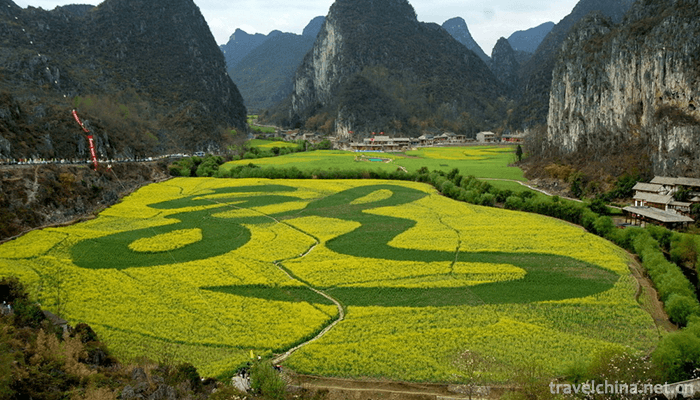
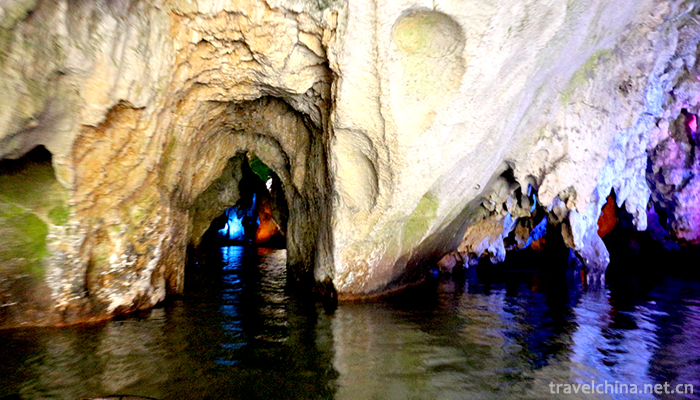
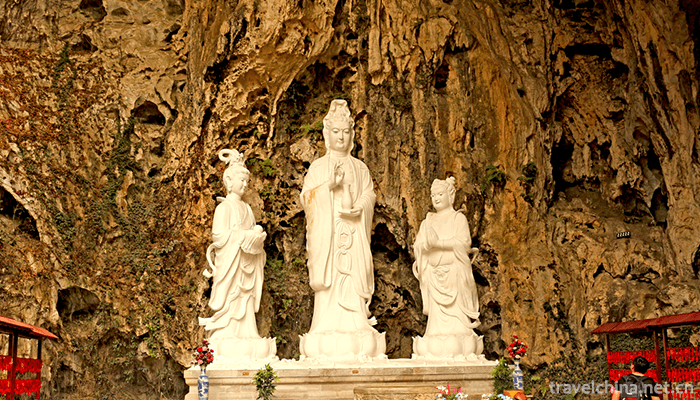
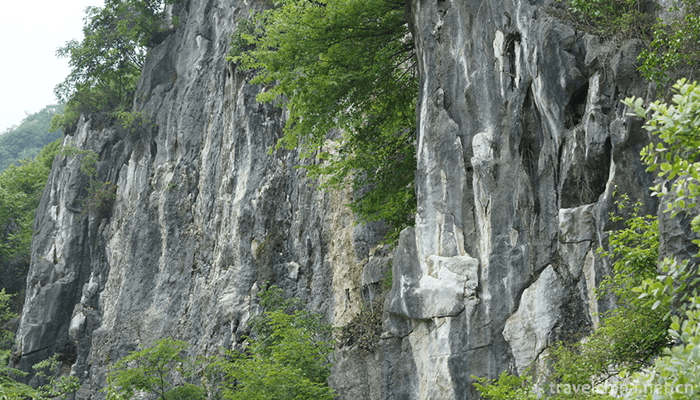
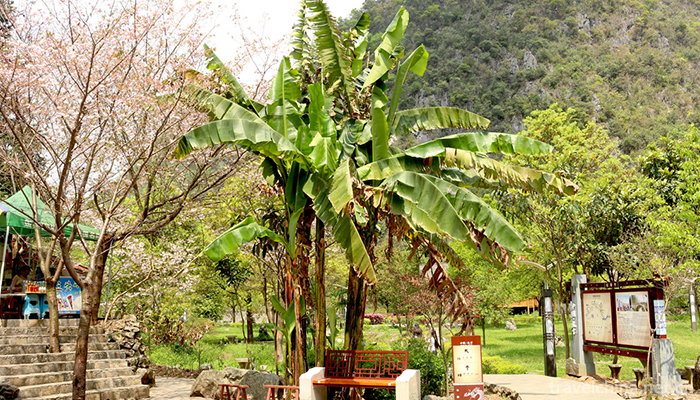
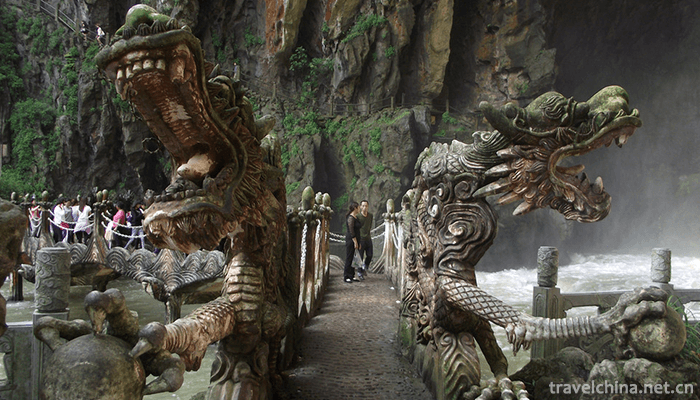
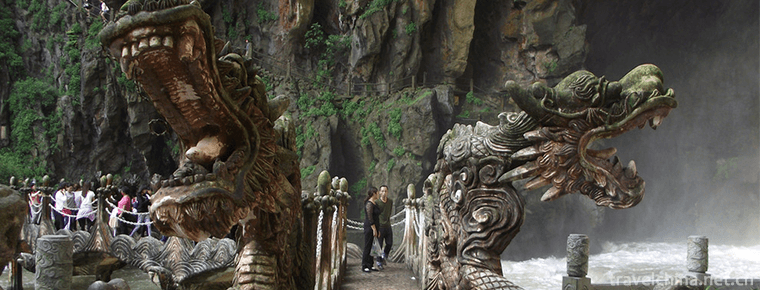
-
1.Zhoucun Ancient Mall
Zhoucun Ancient Mall, also known as Street, is located in Zhoucun District, Zibo City, Shandong Province. The main road of Shandong Province, Jiqing Expressway
Time 2019-03-20 -
2.Three Old People of Korean Nationality
Three Koreans are the traditional folk opera form of the Korean nationality in China. It is composed of three actors who perform in the role of the elderly and merge the forms of Korean opera singing
Time 2019-04-16 -
3.Firing Techniques of Chaozhou Coloured Porcelain
In Chaozhou at the end of the Qing Dynasty, new colored pigments were used in the colored porcelain painting. Combining traditional glaze painting art with traditional Chinese painting
Time 2019-04-16 -
4.Gulunmu Festival of Oroqen Nationality
The Oroqen ethnic group is one of the minorities with a small population in China. Since ancient times, it has multiplied and lived in the deep forest of Heilongjiang Valley and Xing'an Mountains
Time 2019-04-28 -
5.Legend of Hetuluo Books
The legend of Hetu Luoshu is a folklore system about Hetu and Luoshu, which was born in Luoyang, Henan Province. It mainly includes the legend of Longma Negative Tu Temple and the offering of Luoshu b
Time 2019-05-03 -
6.Firing Techniques of Liling Unglazed Colorful Porcelain
The firing technology of Liling Unglazed Five-color Porcelain, the local traditional firing technology of Liling Unglazed Five-color Porcelain in Hunan Province, is one of the national intangible cult
Time 2019-05-13 -
7.Coconut carving
Coconut sculpture is made of coconut shell, coconut palm and coconut wood as raw materials, and is carved into various practical products and plastic arts by hand. Coconut sculpture is one of the spec
Time 2019-07-11 -
8.Legend of Yongding River
Yongding River legend is one of the local folklores in Beijing. Among many legends, the legend of river blocking is representative; the legend of Shijing Mountain and Shijing Mountain; the legend of b
Time 2019-07-14 -
9.Health preservation in traditional Chinese medicine
Health preservation in traditional Chinese medicine refers to a kind of medical activity that can prolong life by taking care of life, strengthening physique and preventing diseases in various ways. H
Time 2019-08-03 -
10.Suining history and culture
As a place name, "Suining" began in the Eastern Jin Dynasty. The Eastern Jin Dynasty coexisted with the Sixteen States, while Suining belonged to the Chenghan state. At that time, the rulers of various countries had been fighting with each other for years
Time 2020-12-16 -
11.Historical evolution of Neijiang
Xia and Shang were Liangzhou, Zhou was Yongzhou, spring and autumn and Warring States were ba Jun and Shu Jun; Western Han Dynasty was Zizhou; Eastern Han Dynasty was Han'an county.
Time 2020-12-16 -
12.Guangan secondary industry
In 2019, the industrial added value of Guang'an City will reach 28.87 billion yuan, an increase of 8.8%, and its contribution rate to economic growth will be 34.9%. At the end of the year, there were 597 Industrial Enterprises above Designated Size, and
Time 2020-12-19